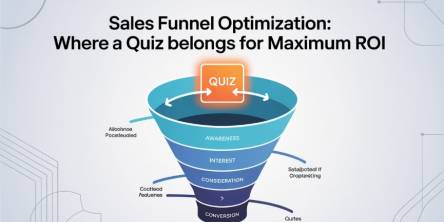Azure Synapse Analytics versus Microsoft Fabric: A Side by Side Comparison

Given the staggeringly high amounts of data being generated worldwide every single day, it ought to come as no surprise that organizations often struggle to pick the right tools to help them effectively harness the potential of all their data. And in this continually evolving realm of data management and analytics, Azure Synapse Analytics and Microsoft Fabric have emerged as the top contenders. But which of these two should one choose?
If you, too, are pondering the same question, you have come to the right place. So, read on to know what Azure Synapse Analytics and Microsoft Fabric are all about and the main differences between the two.
What Refers to Azure Synapse Analytics?
Built on the Azure cloud platform, Synapse Analytics is an analytics service that combines data warehousing with big data analytics. Simply put, it brings a platform to enable data ingestion, storage, processing, analysis, and visualization, no matter its volume or variety.
What Refers to Microsoft Fabric?
On the outset, Microsoft Fabric is an analytics platform enabling data ingestion, processing, analysis, and visualization. However, it includes the capabilities of several Azure services, including Synapse Analytics and Azure Data Share, Power BI, etc. This basically means that Synapse Analytics is a subset of Fabric.
However, just the definitions are not enough to help you decide if you need Azure Analytics or MS Fabric services. This is why we compiled a list of the primary differences between the two. Read on to know more.
Azure Synapse Analytics vs Microsoft Fabric: How Are They Different?
- Data sharing: Fabric can offer users extensive data sharing capabilities, thanks to Azure Data Share. Now that's not to say that Synapse Analytics doesn't offer such capabilities — it does, but through linked services and dedicated pools. Another notable difference is that while Fabric allows data to be shared with collaborators, customers, and external partners, that is not the case with Synapse. Synapse allows data to be shared only within an organization and with controlled access.
- Storage format: In the context of the primary storage format, Azure Synapse Analytics uses the Synapse SQL pool for structured data and Azure Data Lake Storage Gen2 for unstructured data. On the other hand, Fabric uses the OneLake data lake format, allowing users to store structured, semi-structured, and, even unstructured data.
- Performance: Another critical point of distinction is performance, of course. Microsoft Fabric relies on Azure's infrastructure to deliver optimized performance. On the other hand, the Synapse SQL pool too enables high-quality performance for demanding workloads and that too with auto-scale capabilities.
- Scalability: Scalability too, remains a critical differentiating factor for businesses today and understandably so. Anyway, in this department, Fabric can be automatically scaled based on demand. Synapse offers the ability to scale manually and automatically: Synapse SQL pool can scale automatically depending on the workload requirements, whereas Spark pools can be manually scaled.
Final Words
In conclusion, the comparison between Azure Synapse Analytics and Microsoft Fabric reveals two robust solutions designed to address distinct data and analytics needs. With its integrated analytics service, Azure Synapse Analytics offers a comprehensive platform for big data and data warehouse scenarios. Its ability to seamlessly bridge the gap between data preparation and analytics empowers organizations to derive meaningful insights from their data. And if you need help with Azure Synapse Analytics, you can work with a specialist data analytics company that offers services for Azure Analytics. On the other hand, Microsoft Fabric, with its focus on simplifying and accelerating the development of scalable and resilient microservices, serves as a robust foundation for building modern, cloud-native applications. Its emphasis on agility and scalability makes it a valuable choice for organizations seeking to architect and deploy applications modularly and efficiently.
Ultimately, the choice between Azure Synapse Analytics and Microsoft Fabric depends on the specific requirements and goals of the organization. Whether the priority is optimizing data analytics workflows or developing scalable and resilient applications, Azure Synapse Analytics and Microsoft Fabric offer compelling features within their respective domains. As organizations navigate the evolving landscape of cloud services, a thorough understanding of their unique needs will guide them toward making an informed decision that aligns seamlessly with their business objectives and technical requirements.
Similar Articles
Every sales funnel has one core goal: turn attention into revenue as efficiently as possible. Yet many funnels leak value at critical stages—visitors bounce, leads go cold, and sales teams chase prospects who were never a good fit.
Decentralized Finance (DeFi) has transformed how users earn passive income through blockchain-based financial systems. Among its most popular use cases,
Staying organized can feel like a full-time job. Between meetings, deadlines, and personal commitments, it’s easy to get overwhelmed.
Choosing the right GIS mapping software depends on what you need to accomplish. Some platforms cater to developers who want to build custom applications from scratch.
For data intensive industries such as insurance, the global business landscape is undergoing a profound transformation. Thanks to all the relentless technological innovation, this shift presents both significant challenges and unparalleled opportunities for modernization of the insurance sector.
Organizations are always looking for newer technologies to aid their operations. So, this hunt revolves around solutions that offer not only agility and scalability but are also cost-effective.
Not long ago, the idea of multiple AI agents working together, each with a specific role, collaborating to solve problems, felt like science fiction.
In today’s data-driven world, choosing the right business intelligence (BI) platform can make or break your organization's analytics success.
We all know that companies today are no longer limited to a single physical location. Work processes are also no longer strictly isolated.









